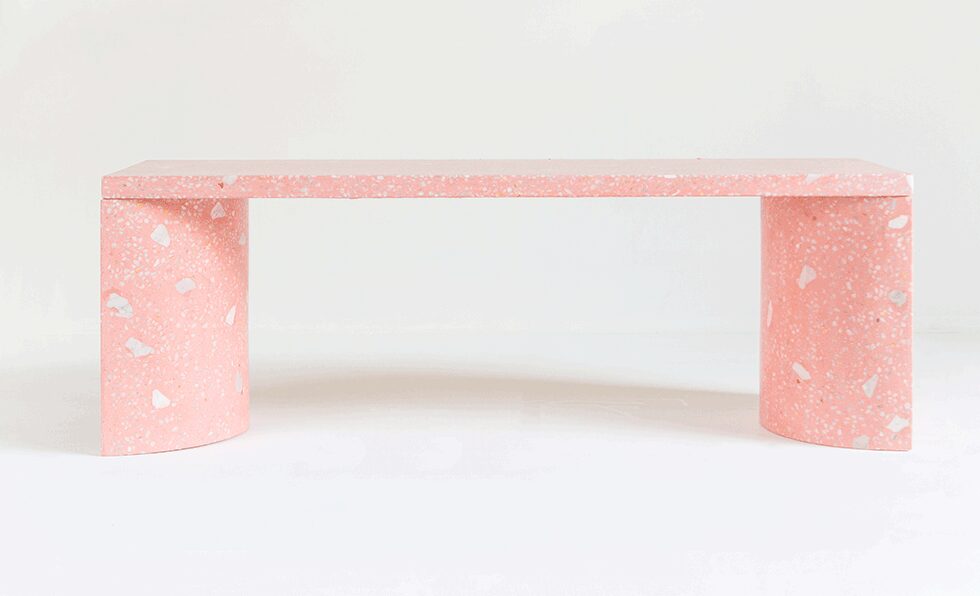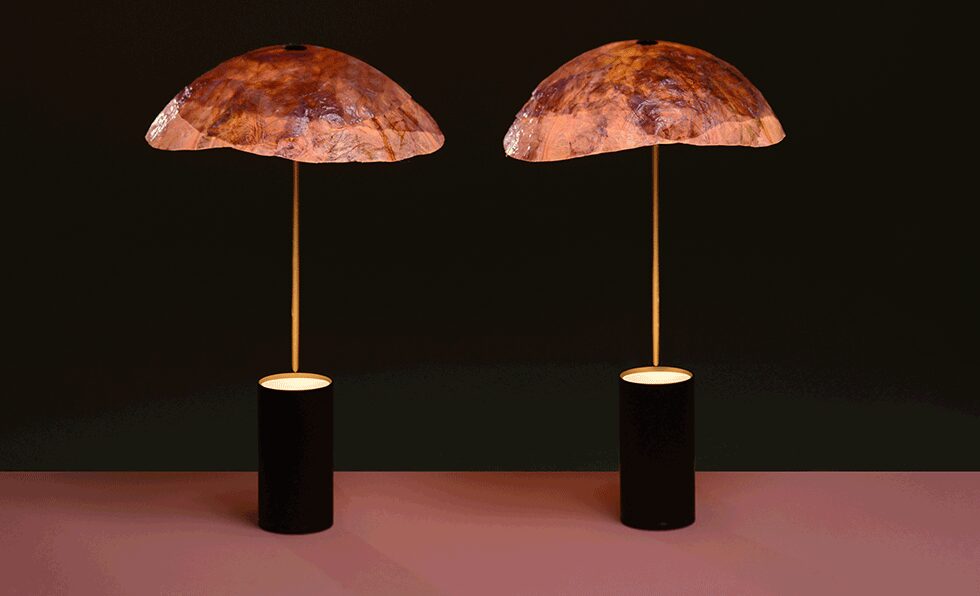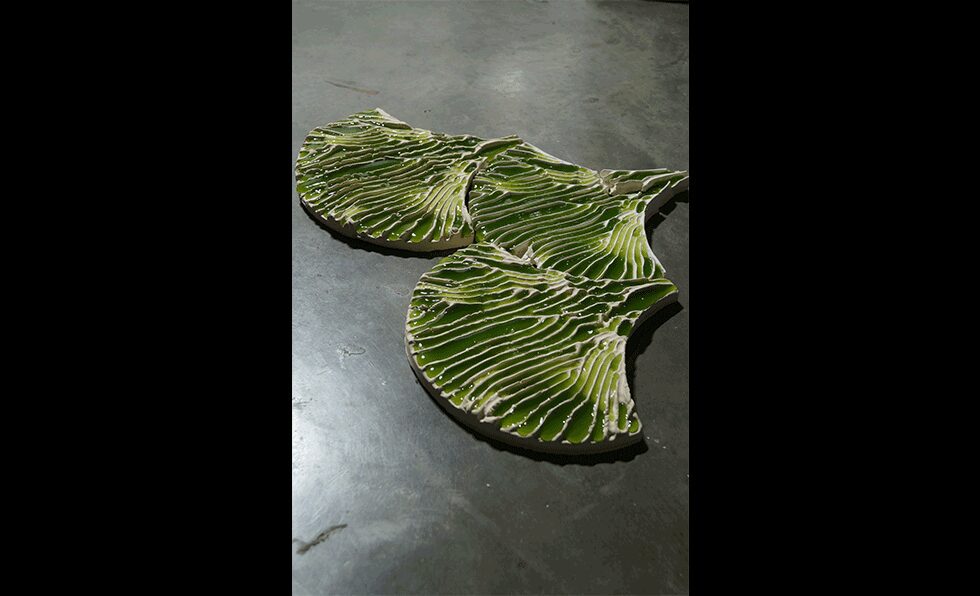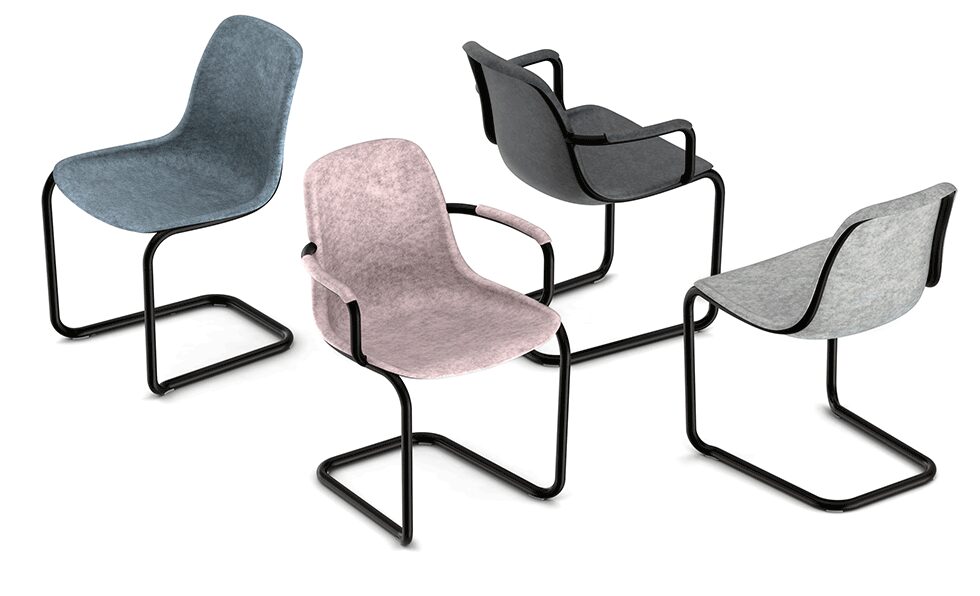Materials
Rethinking how products are made proves that innovation is both stylish and sustainable
Materials
Rethinking how products are made proves that innovation is both stylish and sustainable
Products:
Products:

Furniture and industrial designer Robin Grasby found inspiration in the Romans for Altock, a new surface material handmade from 87 percent reclaimed and recycled materials. Grasby experimented with casting chunks of unused marble in concrete and binding them with a small amount of resin to create a hard-wearing, low-maintenance, highly graphic surface that emphasizes the raw materiality of stone in furniture, work tops, bathroom surfaces, and more. The pieces reflect the natural randomness of their color and shape rather than conforming to rigid patterns or geometry.
Furniture and industrial designer Robin Grasby found inspiration in the Romans for Altock, a new surface material handmade from 87 percent reclaimed and recycled materials. Grasby experimented with casting chunks of unused marble in concrete and binding them with a small amount of resin to create a hard-wearing, low-maintenance, highly graphic surface that emphasizes the raw materiality of stone in furniture, work tops, bathroom surfaces, and more. The pieces reflect the natural randomness of their color and shape rather than conforming to rigid patterns or geometry.

Huguet Mallorca’s Ràpita bench is made entirely of pink terrazzo and white marble aggregate. SMS Architects’ design is defined by simple, geometric shapes that emphasize the natural textures of the materials: A cylinder is divided into two parts with a superior top, which are then combined to create a monochrome and mono-material piece with a sturdy yet striking presence.
Huguet Mallorca’s Ràpita bench is made entirely of pink terrazzo and white marble aggregate. SMS Architects’ design is defined by simple, geometric shapes that emphasize the natural textures of the materials: A cylinder is divided into two parts with a superior top, which are then combined to create a monochrome and mono-material piece with a sturdy yet striking presence.

A collaboration between London-based Nir Meiri Studio and designer Vaidehi Thakkar, the sustainable Veggie lighting collection addresses the challenge of using a vegetable, specifically red cabbage, as the main material. The process begins with separating the cabbage leaves and soaking them in water-based adhesives with sustainable color preservatives. They are then treated with anti-fungal properties, molded into shape, and left to dry in high temperatures.
A collaboration between London-based Nir Meiri Studio and designer Vaidehi Thakkar, the sustainable Veggie lighting collection addresses the challenge of using a vegetable, specifically red cabbage, as the main material. The process begins with separating the cabbage leaves and soaking them in water-based adhesives with sustainable color preservatives. They are then treated with anti-fungal properties, molded into shape, and left to dry in high temperatures.

The Bio-Integrated Design Lab developed Indus as a tile-based, modular bioreactor wall system for cleaning water through bioremediation made using traditional clay-making methods. Inspired by the architecture of a leaf, water flows over a series of vein-like channels that contain algae prepared in a seaweed-based hydrogel. The algae sequesters pollutants such as cadmium, allowing the hydrogel to be processed to safely recover heavy metals.
The Bio-Integrated Design Lab developed Indus as a tile-based, modular bioreactor wall system for cleaning water through bioremediation made using traditional clay-making methods. Inspired by the architecture of a leaf, water flows over a series of vein-like channels that contain algae prepared in a seaweed-based hydrogel. The algae sequesters pollutants such as cadmium, allowing the hydrogel to be processed to safely recover heavy metals.

Zuiver is experimenting with sustainable materials such as elephant grass bioplastic, seaweed bioplastic, and plastic upcycled from PET bottles, the last of which debuted this year as the Thirsty dining chair. Designed in collaboration with Amsterdam-based APE Studio, the shell of each chair is made from 60 to 100 plastic bottles, while the powdercoated steel frame is available with or without armrests.
Zuiver is experimenting with sustainable materials such as elephant grass bioplastic, seaweed bioplastic, and plastic upcycled from PET bottles, the last of which debuted this year as the Thirsty dining chair. Designed in collaboration with Amsterdam-based APE Studio, the shell of each chair is made from 60 to 100 plastic bottles, while the powdercoated steel frame is available with or without armrests.